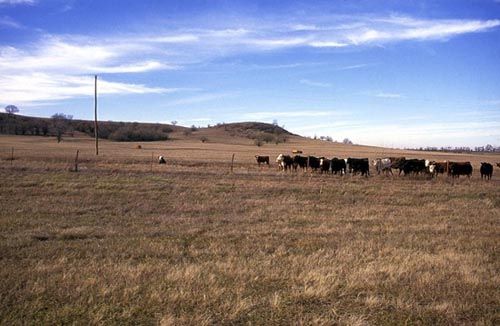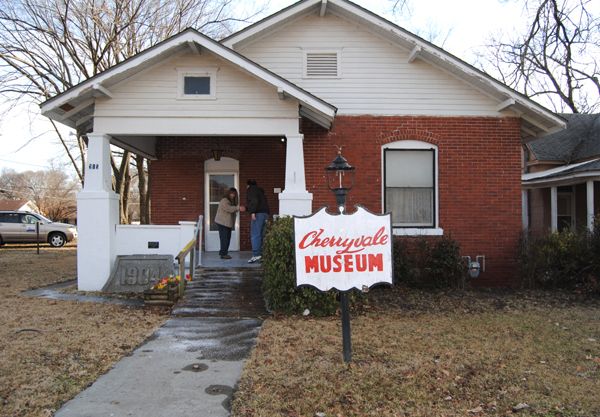In the 19th century, Kansas was a bloody place, especially before the Civil War, as “Free-Soilers” and slavery advocates “duked” it out for control of the new territory. Once Kansas declared itself with the Union and the Civil War began, the bloody battles continued. When the war was over, pioneers began to head westward along the many trails through Kansas; murder and mayhem persisted as hardened men from the battlefields, grown used to the violence, continued their violent ways along the overland trails in the many cow towns. If not accosted by road agents, travelers also had to be concerned about Indian attacks. Southeast Kansas, in particular, was known as a rough area.
Though most of us know of Dodge City’s wicked ways, the deadly gunfight of the Daltons in Coffeyville, and the many outlaws and gunfighters who spent time in the Sunflower State, few are aware of a family of mass murderers, living a supposed quiet life near the small town of Cherryvale.
Just after the Civil War ended, the United States government moved the Osage Indians from Labette County in southeast Kansas to the “new” Indian Territory in what would later become the state of Oklahoma. The “vacated” land was then made available to homesteaders, who, for the most part, were a group of hard-working pioneers farming the area’s softly rolling hills and windswept prairies.
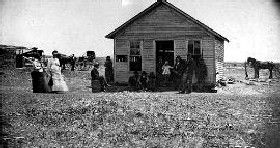
Bender Cabin near Cherryvale, Kansas
In 1870, five families of “spiritualists” settled in western Labette County, about seven miles northeast of where Cherryvale would be platted a year later. One of these families was the Benders, comprised of John Bender, Sr.; his wife, Almira; son, John, Jr.; and daughter, Kate. A cult-like group, the families, chose from several available claims and began to make their homes. John Bender, Sr. chose a 160-acre section on the western slopes of the mounds that continue to bear their name today. The property was located directly on the Osage Mission-Independence Trail from Independence to Fort Scott. His son chose a narrow piece of land just north of his father’s; however, he never lived on his claim nor made any improvements.
The family soon built a small one-room framed cabin, a barn, and a corral and dug a well. Inside the wooden cabin, the area was partitioned with a large canvas, creating living quarters in the back and a small inn and store in the front. A crude sign was hung above the front door that advertised “Groceries” to the many travelers along the Osage Trail. The little “store” carried a few supplies such as powder, shot, groceries, liquor, and tobacco, sold meals, and provided a “safe” overnight resting place to the strangers along the road.
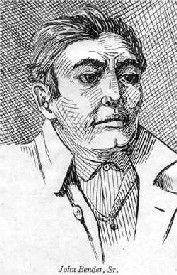
John Bender, Sr.
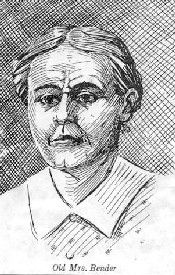
Ma Bender
Keeping mostly to themselves, the Benders appeared to simply be struggling homesteaders who worked hard to earn their living like the other area pioneers. Immigrating from Germany, John Bender, Sr. was 60 years old when he arrived in the area; his wife was about 55. Standing over six feet tall, John was a giant of a man who, because of his piercing black eyes set deeply under huge bushy brows, earned him the nickname of “old beetle-browed John.” His ruddy face, mostly covered by a heavy beard, sullen expression, and long hair often led to him being described as a “wild and wooly-looking man.”
John and his raw-boned wife spoke with such guttural accents that few could understand. Mrs. Bender, a heavyset woman, was so unfriendly and had such sinister eyes that her neighbors began to call her a “she-devil.” To add to her fierce look, Ma Bender claimed to be a “medium” who could speak with the “dead” and boiled herbs and roots that she declared could be used to cast charms or wicked spells. Her husband and son were said to have feared her as she ran the household with an iron hand.
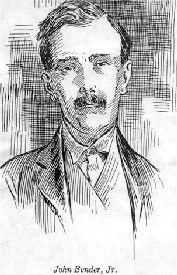
John Bender, Jr. was actually a man named John Gebhardt
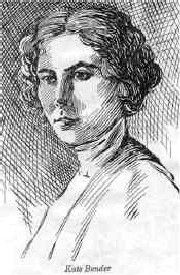
Kate Bender
John Bender, Jr. was a tall, slender man of about 25 who was handsome with auburn hair and a mustache. Speaking English fluently with a German accent, he was said to have been social, but he was prone to laughing aimlessly, which led many people to think of him as a half-wit.
Daughter Kate was the “friendliest” of the bunch, speaking good English with just a slight accent and bore cultivated social skills. A beautiful girl of about 23, she was quick to laugh and talk to strangers. She and her brother John often attended Sunday School near Harmony Grove and were readily accepted in the community.
Kate was a self-proclaimed healer and psychic, gave lectures on spiritualism, and conducted séances. She also claimed to possess psychic powers, including communicating with the dead. She soon found the lecture circuit profitable by distributing circulars that proclaimed her “skills,” including supernatural powers and the ability to cure illnesses and infirmities.
The petite auburn-haired beauty desired notoriety and often advocated free love and justification for murder in her lectures. Along with her desire for fame, she also craved wealth and position. Though her beauty and social skills gained popularity with the locals, her actions began to cause them to say she was “satanic.” It was to be this diminutive Bender family member who would take most of the blame for what was soon to be found out about this infamous family.
When the Benders opened their store and inn in 1871, many travelers would stop for a meal or supplies. However, some of those men, who frequently carried large sums of cash intending to settle, buy stock, or purchase a claim, began to go missing. When friends and family began to look for them, they could trace them as far as the Big Hill Country of southeast Kansas before finding no trace of the lost traveler.
These first few missing travelers did not raise an overall alarm in the area as it was not uncommon for men to continue their journey westward during those days. However, as more time passed, the disappearances became more frequent, and by the spring of 1873, the region had become strife with rumors, and travelers began to avoid the trail.
When neighboring communities started to make slanderous insinuations, the Osage Township called a meeting held at the Harmony Grove schoolhouse in March to see what, if anything, could be done. About 75 people attended the gathering, including both Bender men.
The discussion began regarding the ten people who were reported missing, including a well-known Independence physician named Dr. William H. York. With the full realization that there was a major problem in their township, the group decided to search every farmstead between Big Hill Creek and Drum Creek. The Benders remained silent when most of the attendees volunteered to have their premises searched.
Sometime later, Billy Tole, a neighbor of the Benders, noticed that the Bender Inn was abandoned and their farm animals unfed. Tole reported the news to Leroy F Dick, the Township Trustee, and a search party was soon formed, which included Dr. York’s brother, Colonel A.M. York, of Fort Scott. When the men arrived at the property, they found the cabin empty of food, clothing, and personal possessions. A terrible smell inside the abandoned inn also met them. A trap door, nailed shut, was discovered on the cabin floor.
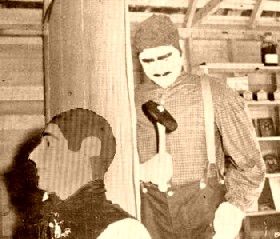
Bender Hiding
Prying it open, the men found a six-foot-deep hole filled with clotted blood, causing a terrible odor. However, there were no bodies in the hole. Finally, the men physically moved the entire cabin to the side and began to search beneath, but no bodies were found there either. Continuing, they began to dig around the cabin, especially in an area the Benders had utilized as a vegetable garden and orchard. At the site of a freshly stirred depression in the earth, they found the first body, buried head downward with its feet scarcely covered. The corpse was that of Dr. William H. York, his skull bludgeoned and his throat cut from ear to ear.
The digging continued the next day; nine other bodies and numerous dismembered body parts were found, including a woman and a little girl. The burial site was christened “Hell’s Half-Acre,” and another brother of Dr. York, a lawyer and State Senator residing in Independence, offered a $1,000 reward for information leading to the Bender family’s arrest. On May 17, Governor Thomas Osborn added to that amount by offering a $2,000 reward for the apprehension of all four.
Word of the gruesome murders spread fast, and thousands of people flocked to the site, including news reporters from as far away as New York and Chicago. The Bender cabin was ripped apart by gruesome souvenir hunters right down to the bloody bricks that lined the cellar. Bit by bit, the story of the Benders was pieced together.
The Benders were not what they appeared. They weren’t even a true “family” — the only ones related were Ma and Kate Bender.
When the visitors stopped for a meal, they were seated at a table with their backs to the large canvas separating the “inn” from the living quarters. Then Kate would begin to charm the men with her social skills, flirting or revealing her psychic “gifts.” As the men gave their full attention to the alluring Kate, Pa and John Bender, hiding behind the canvas, would strike the unsuspecting traveler in the skull with a hammer. Ma Bender and Kate would rifle the body for money, pushing him through the trap door into the hole below the cabin, where Kate would slit his throat. The body would then be buried in the garden behind the house at night.
Their downfall was the murder of a father and daughter named Loncher and Dr. William York, who had come looking for the missing pair. In the winter of 1872, Mr. Loncher and his daughter had left Independence for Iowa but were never heard from again. In the spring of 1873, Dr. York took it upon himself to look for the Lonchers, stopping at the homesteads along the trail to ask questions. Though he reached Fort Scott unscathed and started to return to Independence on March 8, he never reached home.
Dr. York had two brothers, one living in Fort Scott and the other in Independence. Both knew of his travel plans and when he failed to return home, an all-out search began for the missing doctor. Colonel A.M. York, leading a contingency of some 50 men, began questioning every traveler along the trail and stopping at the area homesteads. One of those places was the Bender Inn. The Benders tried to “help” by admitting that Dr. York had stopped at their place but convinced the search party that he had left and was probably waylaid by Indians. Even with her clairvoyant abilities, Kate attempted to “search” for the missing doctor to throw any suspicion off herself.
After Colonel York’s visit and the meeting at the Harmony Grove schoolhouse, the Bender family fled. Only a few days later, the homestead was found abandoned, and the search party began to discover the grisly remains of the bodies.
The diggers were astounded to find what would become known as one of America’s first mass murder burial grounds as body after body was uncovered. Ten bodies were found in the Bender’s apple orchard, including Dr. York and the people he had been searching for – Mr. Loncher and his daughter, just seven or eight years old.

Bender Property Digging, sketch in Harper’s Weekly, June 7, 1873
More gruesomely, though the little girl’s body was found to have multiple injuries, none of them would have caused death, and it was speculated that the poor lass may have been buried alive. Of the discovery of her remains, the Kansas City Times reported:
“The little girl was probably eight years of age and had long, sunny hair and some traces of beauty on a countenance that was not yet entirely disfigured by decay. One arm was broken. The breastbone had been driven in. The right knee had been wrenched from its socket, and the leg doubled up under the body. Nothing like this sickening series of crimes had ever been recorded in the whole history of the country.”
Other bodies found in the garden were those of Henry McKenzie’s mutilated remains, three men named Ben Brown, W.F. McCrotty, and John Geary, as well as an unidentified male and female. Johnny Boyle’s body was found in the well. Dismembered parts of several other victims were also discovered but could never be identified. Four other bodies with crushed skulls and slit throats were also found outside the property in Drum Creek and on the surrounding prairie.
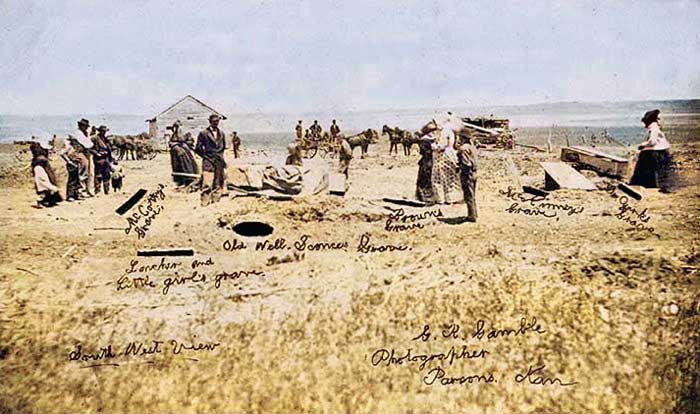
Graves of the many who the Benders killed. Touch of color by LOA.
For all these deaths, the Benders gained only about $4,600, two teams of horses and wagons, a pony, and a saddle. Because some of the travelers carried nothing of value, it was widely speculated that the Benders killed simply for the bloody thrill of it.
As word of the gruesome murders spread, more and more travelers came forward to tell their own stories of a narrow escape, including one gentleman named William Pickering. When he refused to sit with his back to the canvas because of its disgusting stains, Pickering said that Kate Bender threatened him with a knife, so he fled the premises. A Catholic priest said he fled when he saw one of the Bender men concealing a large hammer.
After following a fresh trail of wagon tracks, a search party found that the Benders had gone to the town of nearby Thayer, some twelve miles to the north. They purchased tickets to Humboldt on the northbound Leavenworth, Lawrence & Galveston Train. Several days later, the Benders’ team and wagon were found a short distance away, and the horses nearly starved.
Upon further investigation, Captain James B. Ransom, the train’s conductor, said that John, Jr., and Kate disembarked at Chanute and took the Missouri, Kansas & Texas Railroad train south to the Red River country near Dennison, Texas, which was then the terminus of the railroad.
Allegedly, the pair then fled to a tough outlaw colony along the border of Texas and New Mexico. Meanwhile, Ma and Pa Bender continued on the train north to Kansas City, where it was believed they transferred to a train headed to St. Louis.
Attempts to capture the bloodthirsty family were immediately made by both law officers and vigilantes alike. Though no one ever collected the rewards offered, rumors of several parties who had captured and killed the Benders began to fly. One vigilante group claimed to have shot down the men and Ma Bender and burned Kate alive as the witch they believed her to be. Another group claimed they had caught the Benders while escaping to the south and lynched them before throwing their bodies into the Verdigris River. Yet another group claimed to have killed the Benders during a gunfight and buried their bodies on the prairie.
However, none of these tales were confirmed, nor were bodies found, so most thought the Benders had managed to escape. For years, sightings of Ma Bender and Kate were reported, and in 1889, two women were extradited from Michigan on the charge. The pair were jailed, but the case was dropped for lack of evidence.
Of the “family,” Pa Bender was found to have been a man named John Flickinger, from Germany or Holland. Though he allegedly committed suicide in 1884 in Lake Michigan, others believed that Ma and Kate murdered him because he had fled Cherryvale with all the cash and valuables they had taken from their victims.
Ma Bender was born Almira Meik in the Adirondacks and married as a teenager to a man named George Griffith. After bearing him a dozen children, including Kate, Mr. Griffith suddenly died; some said of a “bad place on his head,” resembling a “dent” that might be made with a hammer. Afterward, she reportedly remarried several times, killing those husbands and three of her older children so they could not testify against her.
John Jr. was found to have been a man named John Gebhardt. His habit of laughing aimlessly led to him being described as a “half-wit,” though many afterward believed this was simply a ruse to disguise his clever nature. Though most were led to believe John and Kate were sister and brother, others said that they sometimes passed as man and wife. The two were known to have had a relationship, and further tales abounded that when Kate became pregnant, they would bash in the baby’s head once it was born. After the Benders’ escape, one detective, who had closely followed all the leads, said that he had traced Gebhardt to the outlaw country along the Texas/New Mexico border, where he had found that the criminal had died of apoplexy.
Kate was the fifth child of Ma Bender and was born Eliza Griffith. Eventually, she married and went by the name of Sara Eliza Davis. Allegedly, while “working” at the Bender Inn, she earned her keep as a prostitute, adding an additional amount to the traveler’s bill for the privilege of laying with her. In the end, it was Kate who was primarily blamed for the numerous bloody murders – that, even at her young age, was the inspiration for the crimes.
Though the tales of what happened to the Benders can only be speculated as to their accuracy, the fact that ten bodies were found on the property is not disputed. Other corpses found in the area and the many mysterious disappearances of other lonely travelers led the locals to believe that the Benders killed more than 20 people.
The sensational tales and rumors of the Benders continued well into the 20th century, but what happened to them remains one of the greatest unsolved mysteries of the Old West.
If the terrible story of the Bender murders was not “legend” enough, another tale began circulating regarding the property upon which the Benders had once lived. The old Bender property was haunted, and the rumors of the locals began to fly. A decade after the gruesome killings, nothing was left of the cabin and outbuildings on the property. The only thing remaining — an empty hole that had once been the cellar. From these depths allegedly came the souls of those murdered on the site, wandering about the property and making moaning sounds that passersby could hear. Those most often reporting glowing apparitions on the property were those who came to the site in search of some long-lost souvenir of the grisly murders. Quickly, the scavengers were frightened away by the dead souls to spread their ghostly tales.

Legends of America founder Kathy Weiser-Alexander hams it up for Discovery Channel producers for the show “Evil Kin,” episode 2, season 2, “The Bloody Benders,” original air date August 12. 2014.
As the haunting legend continued, people began to say that Kate Bender had returned to the property, doomed to roam the very land where she had committed so many atrocities. Whether the stuff of folklore or fact, many believe that the trapped souls of these century-old ghosts continue to lurk at the site today.
So provocative was the Bender family tale that the Bender Museum was created in Cherryvale in 1961. In honor of the Kansas state-wide Centennial Celebration, an exact replica of the Bender cabin that housed antiques and household items was built. Its first three days of opening attracted more than 2,000 visitors. In 1967, three of the Bender hammers were gifted to the museum by the Dick family. The museum remained a popular tourist destination until it closed in 1978 when a fire station was built. Though many wanted to relocate the building, it had become a controversy in Cherryvale, with locals objecting to the town being known for the Bender atrocities. In the end, the artifacts, including the hammers, photos, and newspaper clippings, were placed in the Cherryvale Museum and can still be seen today at 215 East 4th Street.
In addition to the museum, southeast Kansas may be the only place where a state historical marker celebrates mass murder. While not on the old Bender property, the marker sits on the high prairie about a mile northwest of Bender Mounds at the US-400 and US-169 interchange at the Montgomery County Rest area, north of Cherryvale.
In 2020, the land that the Bender home was on was purchased by Bob Miller of Independence, Kansas, who announced he would attempt to unravel some of the mysteries surrounding the Benders. Plans are in the works to pinpoint the location of the home on the property, with an archeological dig slated for May 2024.
Contact Information:
Cherryvale Museum
215 East 4th Street
Cherryvale, Kansas
620-336-3576
© Kathy Alexander/Legends of America, updated November 2023.
Reader’s Update: January 2011
Grandpa’s Tale of the Bloody Benders
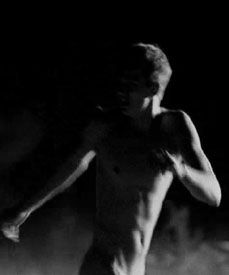
Last night, I listened to a story from my grandfather, Emerson Smalley, about the Benders and their supposed end. His family was from the Cherryvale, Kansas area, and the story involves a group of men that found the Benders and were in a gunfight with them, one of whom was a judge who lost part of his ear in the gun battle. My grandfather, who is approaching 80 years old, is always full of great stories, but he assured me that his father, who passed this on to him, knew what happened. When his father (my great grandfather), Frank Smalley, was a boy, he was hiding in the hayloft of the family barn when he overheard a group of men below talking and laughing. Frank’s father, Jesse P. Smalley, and several men were joking with a local judge, teasing him about his missing ear. As the boy listened, the men continued to talk, relating the tale of how the judge had lost his ear. It was a story about the infamous Benders and about one man who got away. This unnamed man was one of the many who made the mistake of stopping at the Bender Inn. Like others, he was hit over the head as he sat at the table. The Benders then stripped him of his clothes and went to bury him when the man suddenly awoke. The Benders were undoubtedly surprised to find that the man wasn’t dead. Somehow, he escaped, appearing naked in the middle of the night at Jesse Smalley’s doorstep. Telling the story of his near-death, Jesse quickly retold it to a nearby doctor and judge, who formed a vigilante group to go after the Benders.
However, by the time the men arrived at the Benders’ cabin very early the next morning, they found them gone. They then began to follow a wagon trail left by the Benders that took them down as far south as Tulsa, Oklahoma, before circling back into Kansas. At a fork of the Fall and Verdigris Rivers, they found the Benders with their wagon backed up against a fallen tree with canvas over it for shelter. When the vigilante group approached, the Benders fired on them, at which time, the judge lost part of his ear to a flying bullet. In retaliation, the vigilantes killed all of the members of the Bender family buried them where they died, and took the wagon to town, where they left it.
I have heard my grandfather tell this story since I was a boy, and Grandpa swears that this is the real story of what happened to the Benders. Fact or fiction, no one knows, but I’ve always enjoyed the tale and hope you will as well.
Today, Smalley descendants continue to live in the Neodosha and Cherryvale areas.
— Gabe Gibson, Effingham, Illinois, as told to him by his grandfather, Emerson Smalley, January 2011.
Also See:
Charles Kennedy – Old West Serial Killer
The Vicious Harpes – First American Serial Killers
Sources:
Cherryvale, Kansas Museum
James, John Towner; The Benders of Kansas; Kan-Okla Publishing, Wichita, KS, 1913, reprinted 1995.
Prairie Ghosts (Now American Hauntings Ink)

